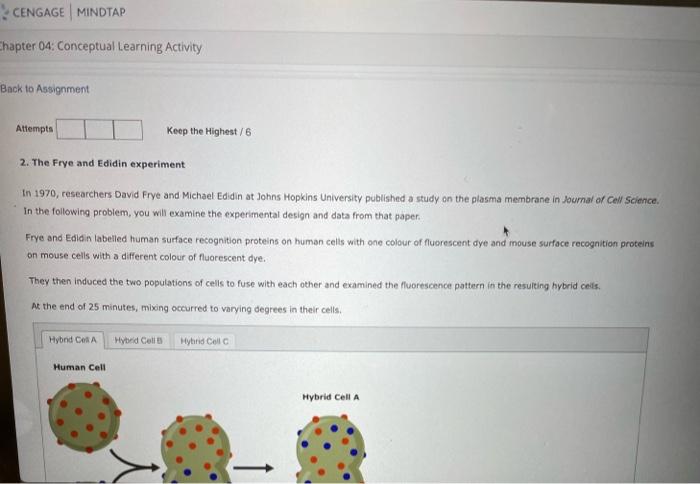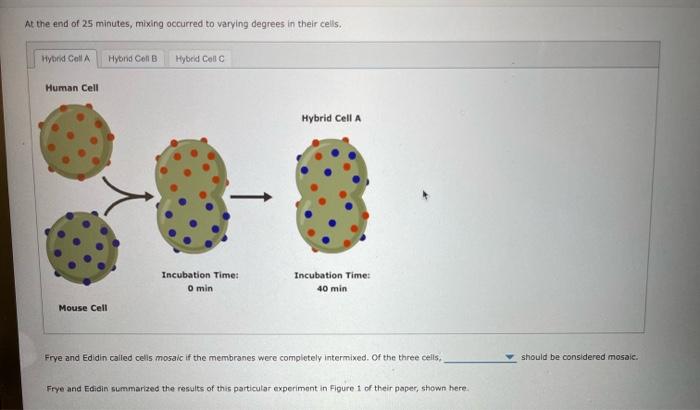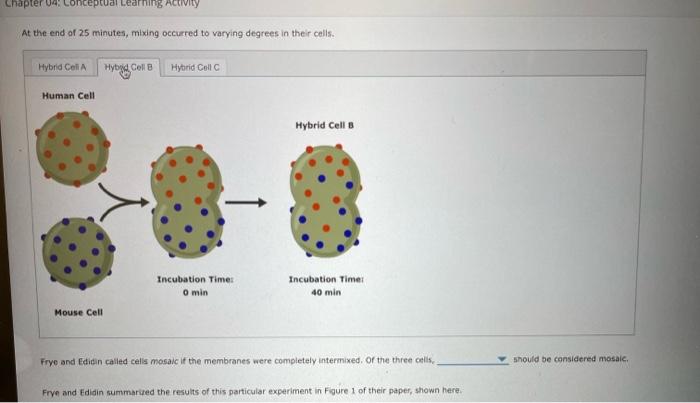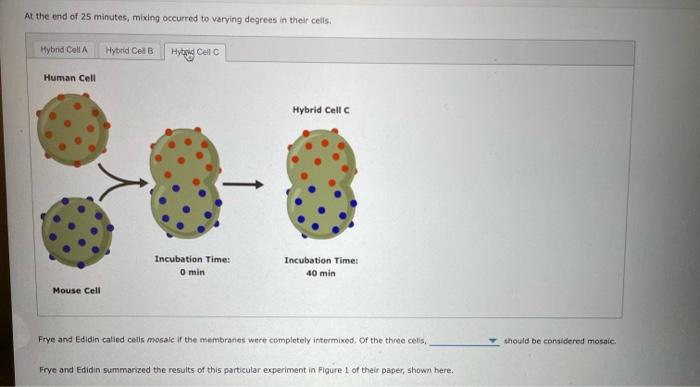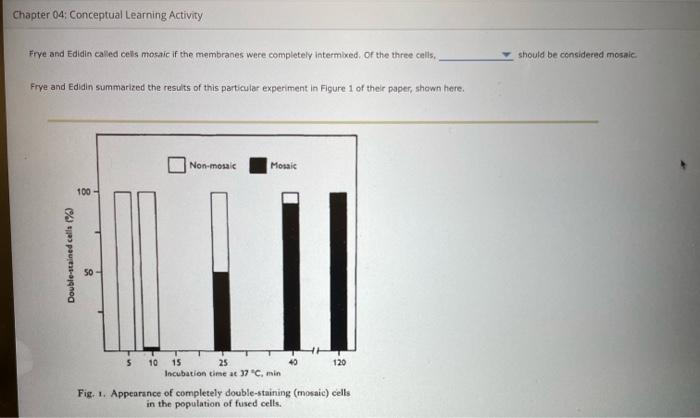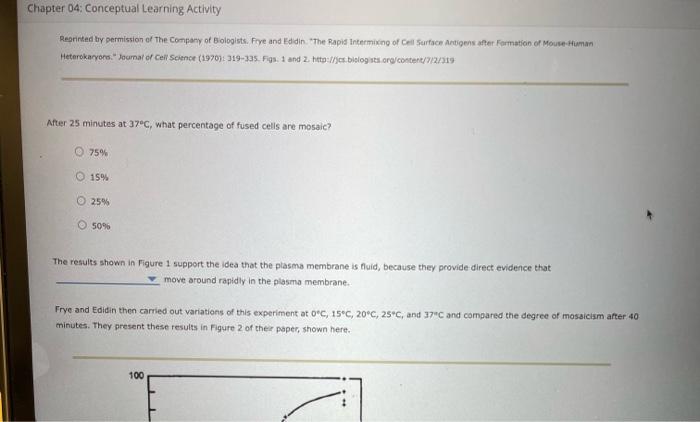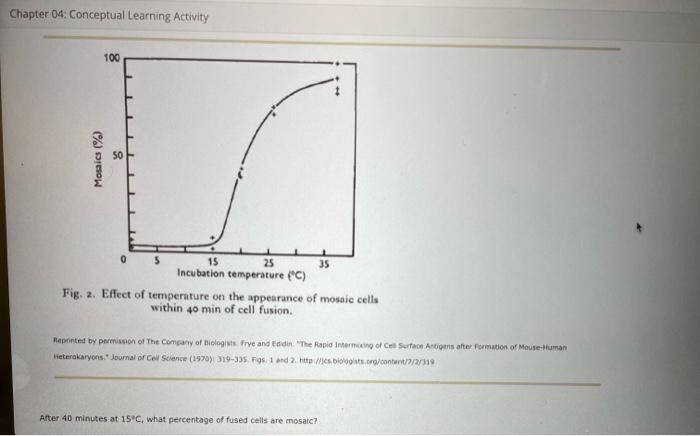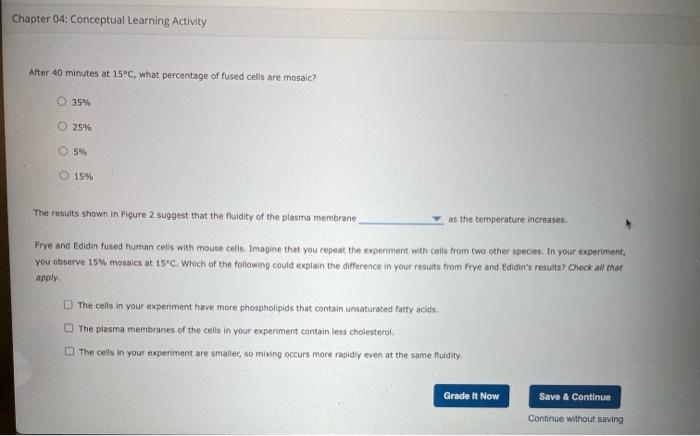2. The Frye and Edidin experiment In 1970, researchers David Frye and Michael Edidin at Johns Hopkins University published a study on the plasma membrane in bournal of Cedf Science. in the following problem, you will examine the experimental design and data from that paper. Frye and Edidin labelled human surface recognition proteins on human cells with one colour of fluorescent dye and inouse surface recognition proteins on mouse cells with a different colour of fluorescent dye. They then induced the two populations of celis to fuse with each other and examined the fluorescence pattern in the resulting hybrid ceds. At the end of 25 minutes, mixing occurred to varying degrees in their cells. At the end of 25 minutes, mixing occurred to varying degrees in their cells. Hywid CellA Frye and Edidin called cells mosaic if the membranes were complotely intermixed. Of the three cells, should be considered mosaic. Frye and Edidin summarized the results of this particular experiment in Figure 1 of their paper, shown here. At the end of 25 minutes, mixing occurred to varying degrees in their celis. Frye and Edicin called cells mosalc if the membranes were completely intermixed. Of the three celis, should be cansidered avosaic, Frye and Edidin summarized the results of this particular experiment in Figure 1 of their paper, shown here. At the end of 25 minutes, mixing occurred to varying degrees in their cells. Hytwig Cen C Frye and Edidin calied celis mosaic if the membraties were completely intermixed, of the three cells, thould be considered mosaic. Frye and Edidin summanzed the results of this particular experiment in figure 1 of their paper, shown here. Frye and Edidin called cells mosaic if the membranes were completely intermbed; of the three cells, should be considered mosaic. Frye and Edidin summarized the results of this particular experiment in Figure 1 of their paper, shawn here. Fig. 1. Appearance of completely double-staining (mosaic) cells in the population of fused cells. Rearinted by permission of The Compary of Bologists. Five and Edidin. The Rapis Intermixng of Ceil Surface Antigens affer Formation of Mouse. Human After 25 minutes at 37C, what percentage of fused cells are mosaic? 75% 15% 25% 50% The results shown in Figure 1 support the idea that the plasma membrane is fluid, because they provide direct evidence that move around rapidly in the plasma membrane. Frye and Edidin then carried out variations of this experiment at 0C,15C,20C,25C, and 37C and compared the degree of mosaicism after minutes. They present these results in Figure 2 of ther paper, shown here. Chapter 04: Conceptual Learning Activity Fig. 2. Effect of temperature on the appearance of mosaic cells within 40 min of cell fusion. After 40 minutes at 15FC2, what percentage of fused cells are mosaic? After 40 minutes at 15C, what percentage of fused cells are mosaic? The results shown in Figure 2 suggest that the fuidity of the plasma membrane Frye and Edidin fused human cells with mouse celis. Imagine that you repeat the experiment with cells from two other species. In your experiment, you observe 15% mosaics at 15C. Which of the following could explain the difference in your resuits from frye and Edidin's resuits? Check all that apply. The ceils in vour experiment have more phospholipids that contain unsaturated fatty acids. The plasma membranes of the cells in your experiment contain less cholesterol. The cells in your experiment are smaller, so mixing occurs more rapidiy even at the same fluidity
